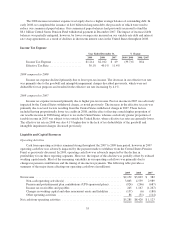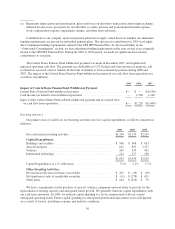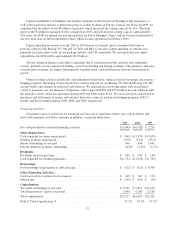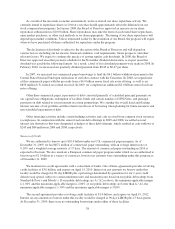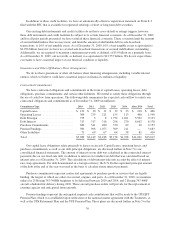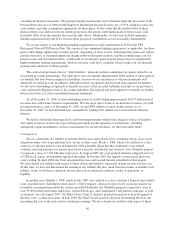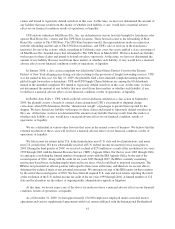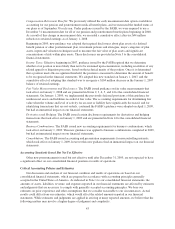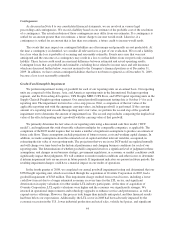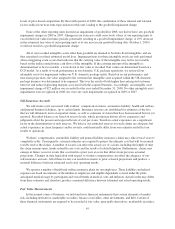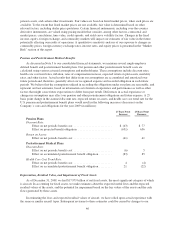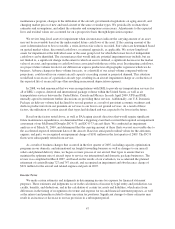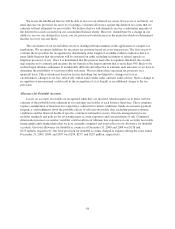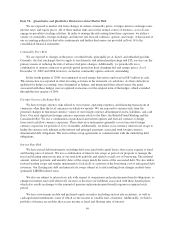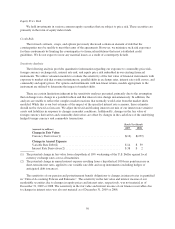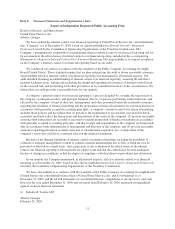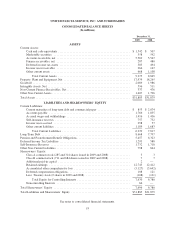UPS 2009 Annual Report Download - page 55
Download and view the complete annual report
Please find page 55 of the 2009 UPS annual report below. You can navigate through the pages in the report by either clicking on the pages listed below, or by using the keyword search tool below to find specific information within the annual report.Compensation-Retirement Benefits: We previously utilized the early measurement date option available in
accounting for our pension and postretirement medical benefit plans, and we measured the funded status of
our plans as of September 30 each year. Under guidance issued by the FASB, we were required to use a
December 31 measurement date for all of our pension and postretirement benefit plans beginning in 2008.
As a result of this change in measurement date, we recorded a cumulative effect after-tax $44 million
reduction to retained earnings as of January 1, 2008.
Beginning in 2009, new guidance was adopted that required disclosures about plan assets of a defined
benefit pension or other postretirement plan, investment policies and strategies, major categories of plan
assets, inputs and valuation techniques used to measure the fair value of plan assets and significant
concentrations of risk within plan assets. These disclosures are provided in Note 5 to the consolidated
financial statements.
Income Taxes: Effective beginning in 2007, guidance issued by the FASB required that we determine
whether a tax position is more likely than not to be sustained upon examination, including resolution of any
related appeals or litigation processes, based on the technical merits of the position. Once it is determined
that a position meets this recognition threshold, the position is measured to determine the amount of benefit
to be recognized in the financial statements. We adopted this new standard on January 1, 2007, and the
cumulative effect of adopting this standard was to recognize a $104 million decrease in the January 1, 2007
balance of retained earnings.
Fair Value Measurements and Disclosures: The FASB issued guidance on fair value measurements that
took effect on January 1, 2008 and are presented in Notes 2, 3, 4, 5, and 14 to the consolidated financial
statements. On January 1, 2009, we implemented the previously deferred provisions of this guidance for
nonfinancial assets and liabilities recorded at fair value. The accounting requirements for determining fair
value when the volume and level of activity for an asset or liability have significantly decreased, and for
identifying transactions that are not orderly, contained the FASB’s guidance were adopted on April 1, 2009,
but had an immaterial impact on our financial statements.
Derivatives and Hedging: The FASB issued certain disclosure requirements for derivatives and hedging
transactions that took effect on January 1, 2009 and are presented in Note 14 to the consolidated financial
statements.
Business Combinations: The FASB issued new accounting requirements for business combinations, which
took effect on January 1, 2009. This new guidance was applied to business combinations completed in 2009,
but had an immaterial impact on our financial statements.
Consolidation: The FASB issued accounting and presentation requirements for noncontrolling interests,
which took effect on January 1, 2009, however this new guidance had an immaterial impact on our financial
statements.
Accounting Standards Issued But Not Yet Effective
Other new pronouncements issued but not effective until after December 31, 2009, are not expected to have
a significant effect on our consolidated financial position or results of operations.
Critical Accounting Policies and Estimates
Our discussion and analysis of our financial condition and results of operations are based on our
consolidated financial statements, which are prepared in accordance with accounting principles generally
accepted in the United States of America. As indicated in Note 1 to our consolidated financial statements, the
amounts of assets, liabilities, revenue, and expenses reported in our financial statements are affected by estimates
and judgments that are necessary to comply with generally accepted accounting principles. We base our
estimates on prior experience and other assumptions that we consider reasonable to our circumstances. Actual
results could differ from our estimates, which would affect the related amounts reported in our financial
statements. While estimates and judgments are applied in arriving at many reported amounts, we believe that the
following matters may involve a higher degree of judgment and complexity.
43




